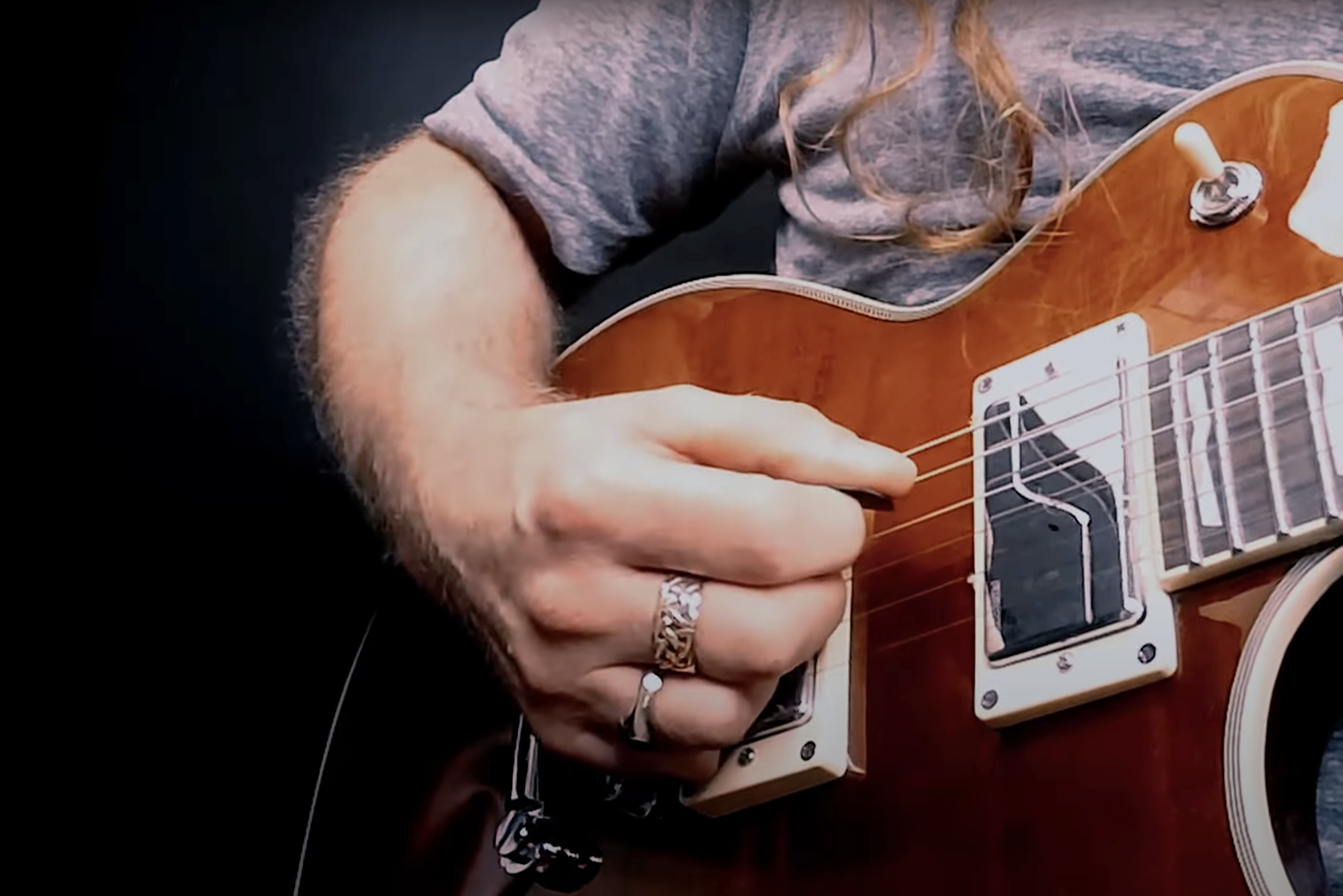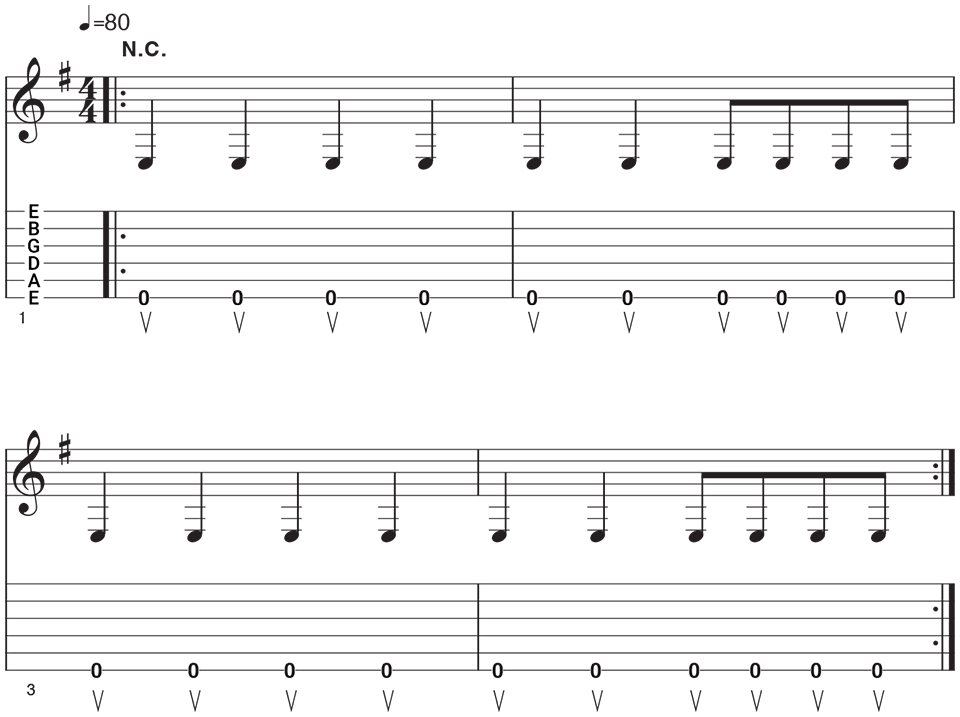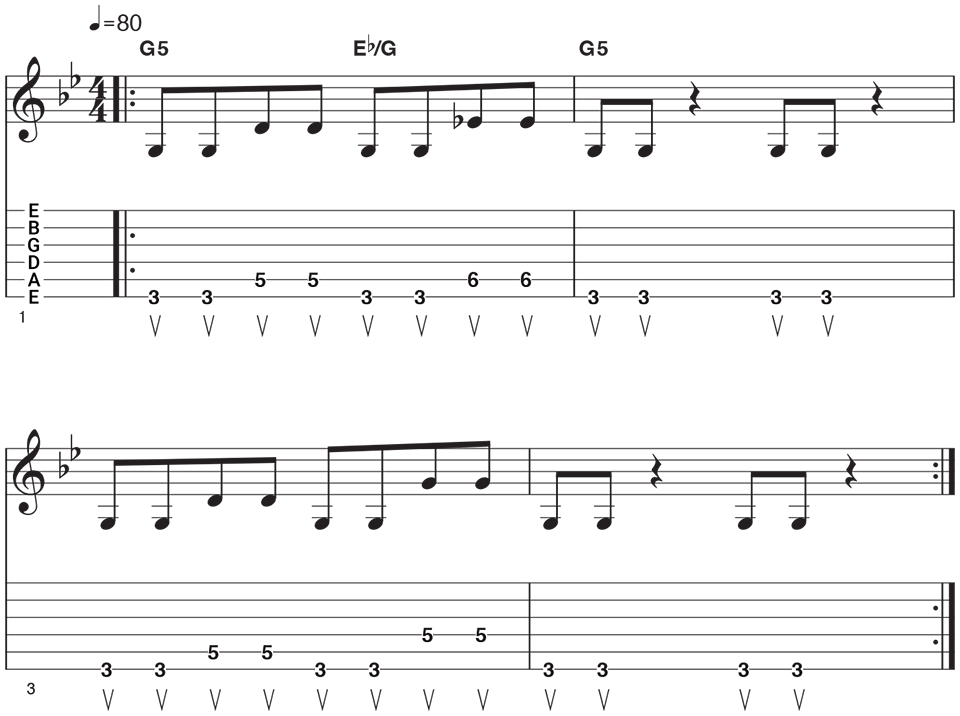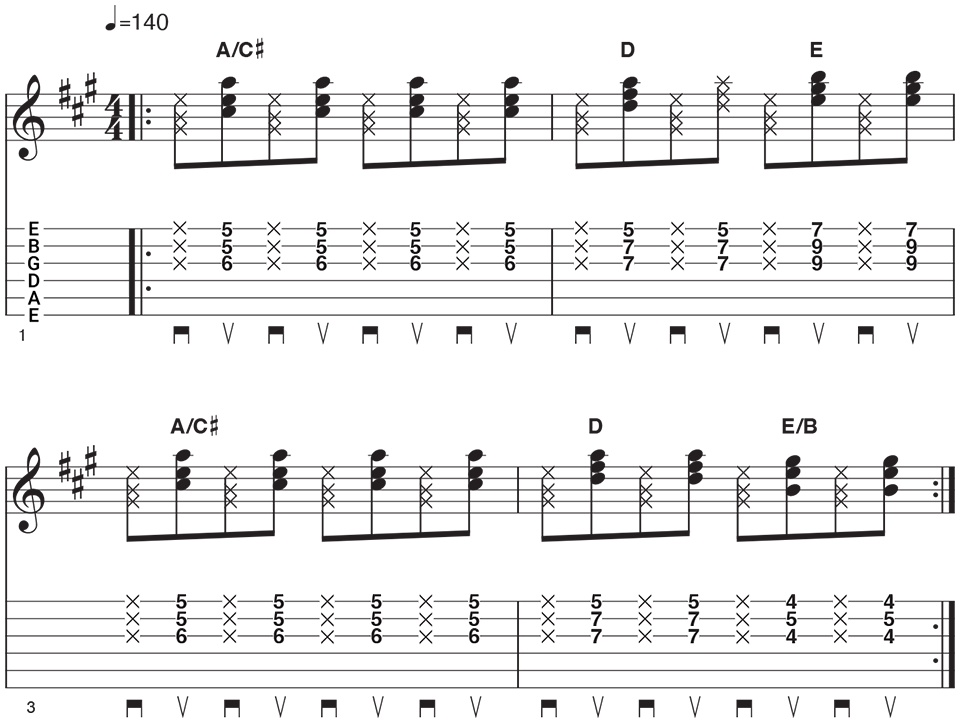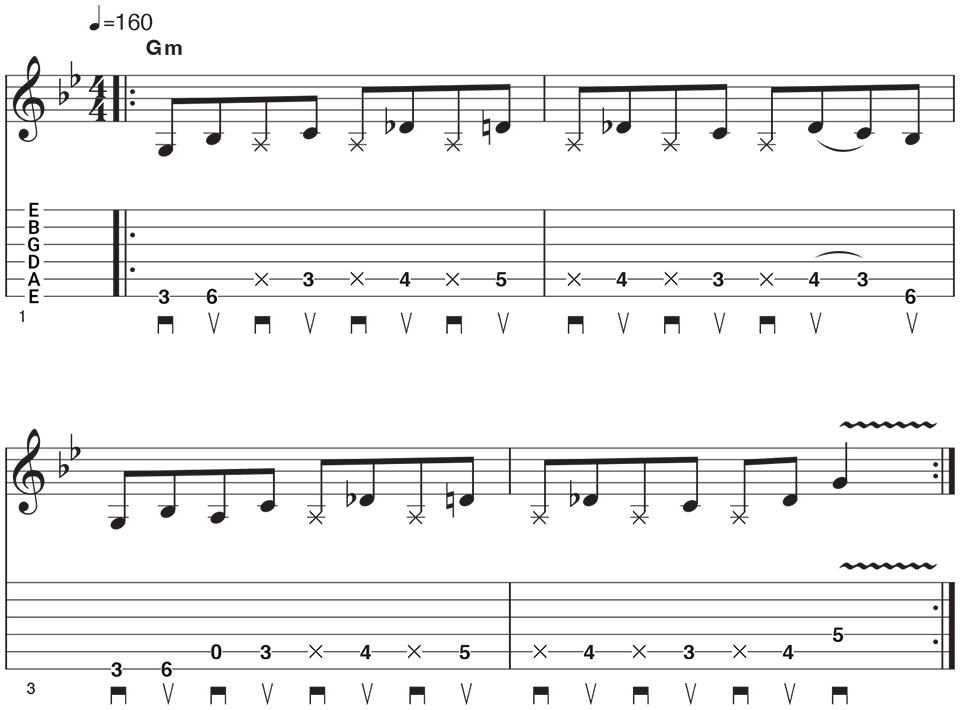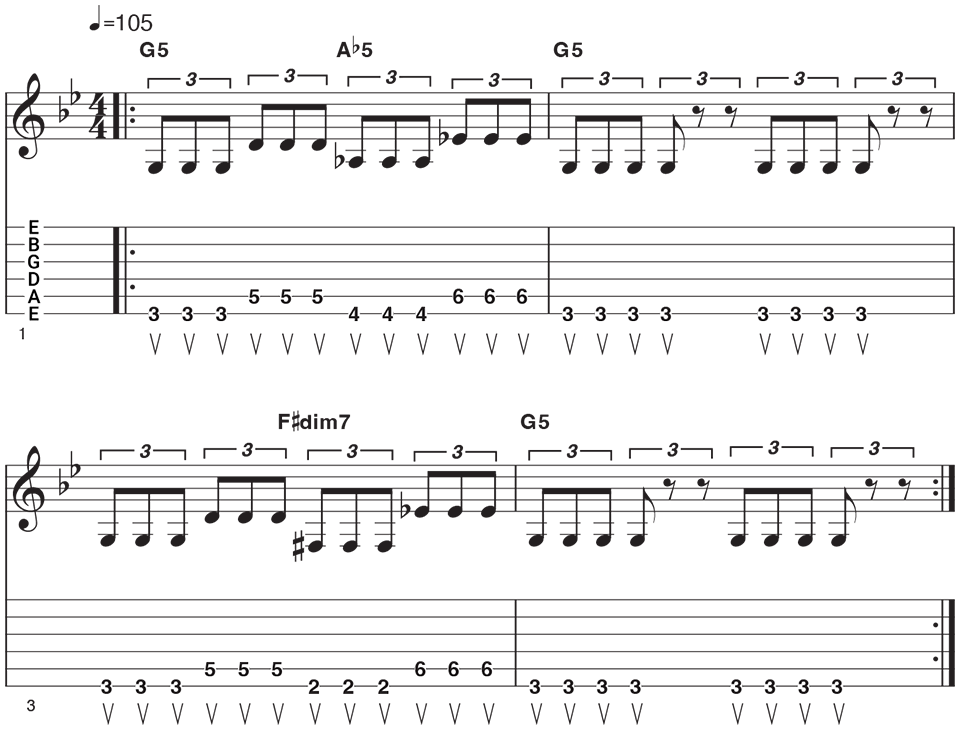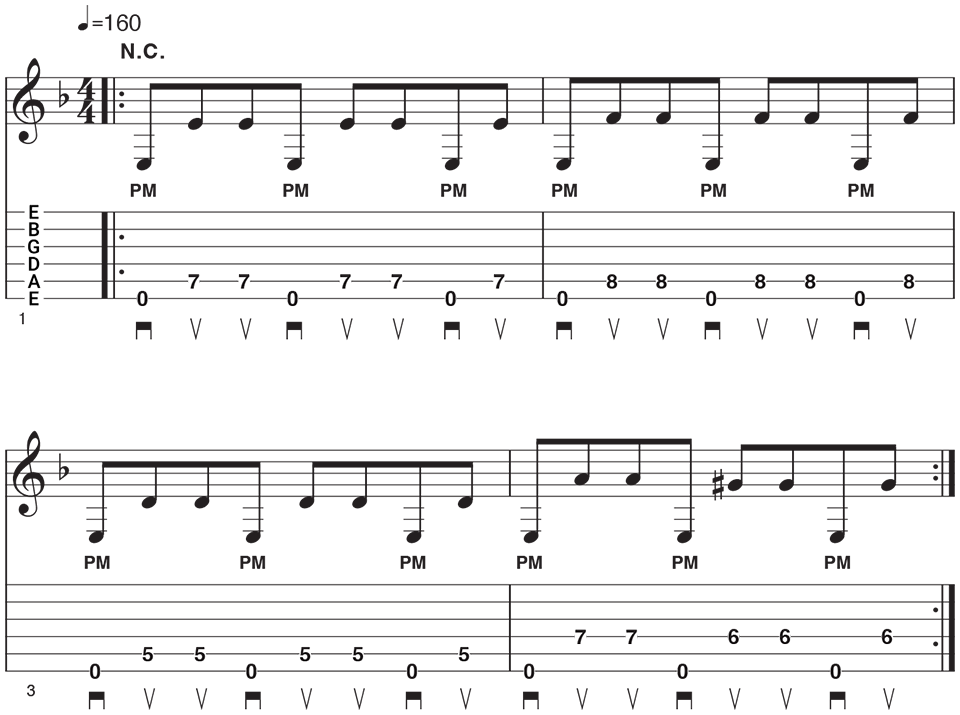Guitarists always talk about down-picking, but have you worked on your up-picking lately? Here's why it could be a game-changer for your playing
Mastering confident upstrokes can take your playing to the next level, whatever style you play
There are two fundamental strokes you use as a pick player. One is down-picking where the pick's direction is towards the floor and the other is up-picking where the pick moves upwards, towards your face. Both are vital, sharing the work required to sound the strings.
At a very fundamental level, many guitarists use down-picks on down beats and up-picks on up beats. This allows for technical consistency that keeps general playing simple. You'll see this throughout the examples below.
But while down-picking gets a lot of focus – especially in metal – there's not as much discussion about up-picking, despite its importance.
One outstanding element to up-picking is tone: with the upward motion and the angle of how the pick is held, up-strokes often have a bright and lively sound (clean or distorted) that cuts well through a band mix. If you're after a way to have a note or chord 'bite', an up-stroke can often be the solution.
Then technically, since they often follow down-strokes, confident up-strokes help to define your timing during off-beats and playing syncopated rhythms. This is why reggae, ska, and funk players use a lot of up-picking for their chord chops.
Now to the fundamentals: below are two images of an up-pick being used on the fifth string.
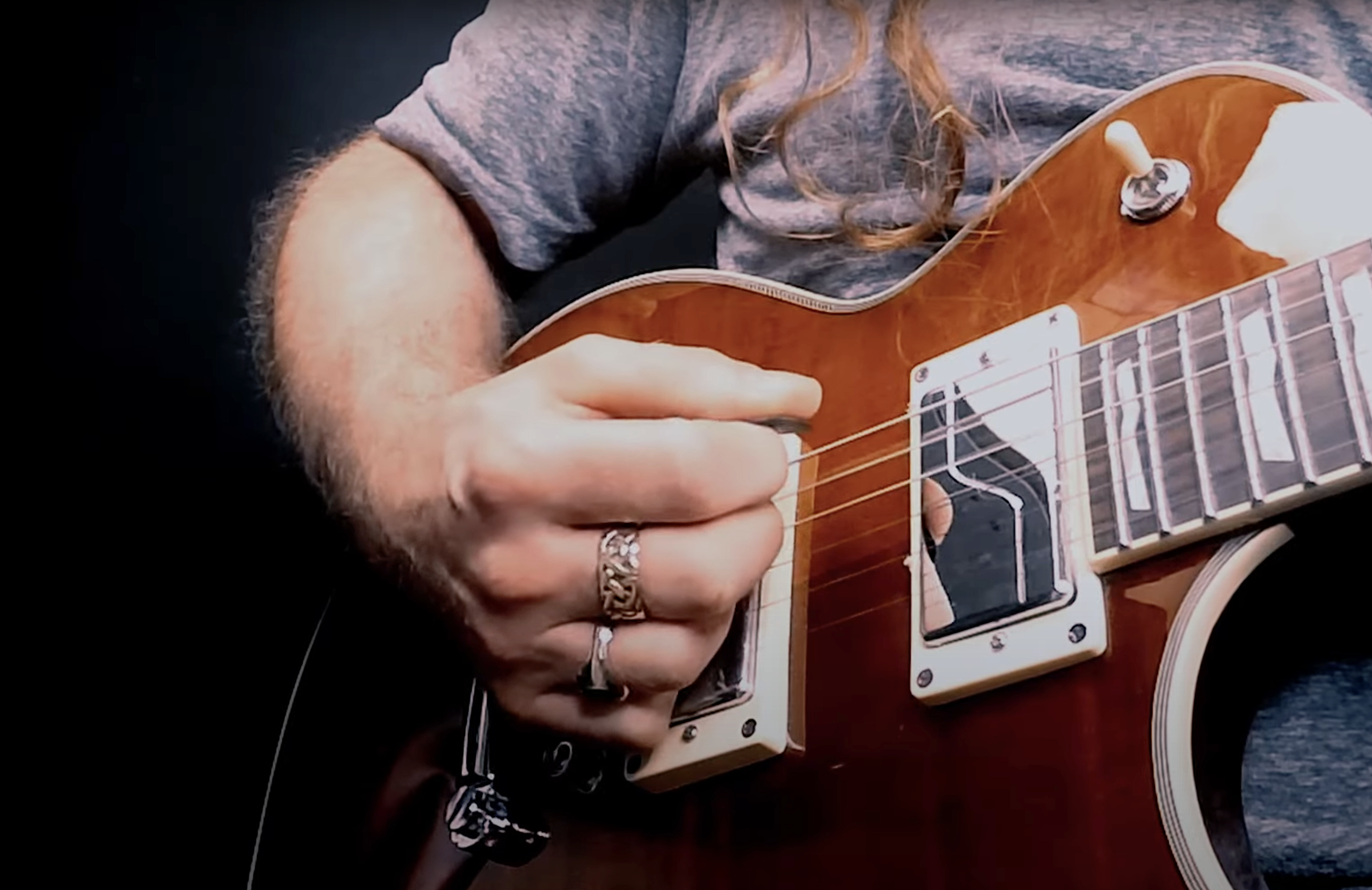
When used strategically, up-picking can make string changes smoother and reduce timig 'hiccups'. Power pickers like Paul Gilbert and Andy James like to add strength and bite when crossing strings, using up-picks to help achieve this.
All the latest guitar news, interviews, lessons, reviews, deals and more, direct to your inbox!
But perhaps one of the best ever up-stroke moments is at the end of the guitar solo in Deep Purple's Smoke On the Water where Ritchie Blackmore pick chokes his gradually dropping string bend. What a rhythmically biting result!
So without further ado, here are six exercises to hone the foundations of your up-picking technique. With a focus on developing accuracy and good tone, you will explore off-beat and syncopated phrasing in both your lead and rhythm playing. And then over a period of time, you will see your stamina and speed improve greatly.
Example 1. The foundations of up-picks (low sixth string)
This focuses on developing a strong and confident up-picking technique, playing the low sixth string with just up-strokes. Whilst an unusual approach, using just ups will greatly strengthen this stroke.
Rather than keeping the underside of your picking hand parallel to the strings, rotate your hand slightly so your pick moves away from the strings. This adjustment stops your upstroke from connecting with an upper string. You'll see this in the video.
Start with just quarter notes (as shown in bar 1), played slowly so you don't tense up and can maintain even timing and volume. Once this is secure, you can complete the whole exercise which switches from quarter notes (1 note per beat) to 8th notes (2 notes per beat).
Example 2. Developing up-pick agility on the low strings
This phrase consists entirely of 8th notes, either as eight notes in a bar (bars 1 and 3) or as four notes (bars 3 and 4). Count a steady 1 & 2 & 3 & 4 & to feel the two-notes-per-beat subdivision. Most of this example involves riffing on the sixth and fifth strings so you get used to crossing two strings that are close together.
That said, during bar 3's beats 3 and 4 there is a bigger jump from the sixth string to the fourth string. This requires a bigger picking hand motion so practice this on its own if you're struggling to maintain the jump. Throughout, keep your picking hand’s wrist and forearm relaxed to prevent tension and ensure smooth transitions between strings.
Example 3. Up-picking for off beat high string chords
A change of scene now as you focus on a chord strumming pattern on the top three strings. To do this, you'll need to make a wide "U" shaped strumming motion, allowing both down-strokes and up-strokes to connect with the first three strings.
The relevance of this rhythm is you will mute the strings with your fretting hand on the down-strums (which happen on the down beats) and then fret the chord for all the up-strums (which happen on the upbeats). With regular off beat chords being sounded like this, you're learning a reggae styled groove and if played faster, it'll be more ska like.
Pro tip: have your fretting fingers lightly resting on the strings to mute them during down-strums. For chord clarity on the up-strums, make good contact with the fretted notes.
For consideration: experiment with how long to sustain the up-strummed chords by taking your fingers off as soon as the pick has strummed. Certainly, some reggae and ska styles can require very clipped/staccato chords indeed.
Example 4. Emphasing off beat notes with up-picks
This returns to a single-note approach but uses a muted down-stroke with the fretting hand, followed by notes sounding on the up-strokes. Each muted down-stroke serves as a rhythmic marker, helping you to maintain accurate timing and create strong off-beat phrasing from the up-picked notes. As there are many off beat notes, the overall effect has a strong groove especially when a drummer plays a standard rock beat.
Example 5. The triplet challenge: 3 notes per beat, all up-picks
Now you will work with 8th note triplets, counted as ‘1 Trip-let, 2 Trip-let, 3 Trip-let, 4 Trip-let.’ A word of advice: with frequent up-strokes, fatigue can quickly set in. To prevent this, aim not to tense up too much and use small controlled picking motions. These tips will allow you to maintain stamina without burning out too soon. Start slow and then increase your tempo over time as this exercise is designed to build control, accuracy, and up-picking endurance.
Example 6. Syncopated riffing that exploits bright sounding up-picks
The final example is in E Phrygian Dominant (E F G# A B C D), the fifth mode from the A Harmonic minor scale (A B C D E F G#) and an ear catching approach to imply or augment an E7 chord. It features a melodic sequence divided into phrase groupings of 3 + 3 + 2. The first note of each group is played with a down-stroke then the remaining notes are played with up-strokes. This keeps the picking hand moving in the same direction as each string change. Finally, add picking hand palm muting to provide chunk to the low sixth string E notes for a driving rock riff.
Jamie is a regular contributor to Guitar Techniques and Total Guitar magazines. He is also a Principal Lecturer in guitar and live performance at BIMM Bristol. Alongside this, he shares seven string guitar duties with Steve Smyth (ex-Testament, ex-Nevermore, Forbidden), in the modern thrash metal band One Machine. Additionally, Jamie is the UK brand ambassador for ESP guitars, where he creates product demos and delivers clinics across the UK and throughout the Scandinavian countries. More recently, he co-created the ESP School of Metal Guitar, where a team of versatile metal guitarists break down all things heavy.
- Jason SidwellTuition Editor – GuitarWorld.com, GuitarPlayer and MusicRadar.com
You must confirm your public display name before commenting
Please logout and then login again, you will then be prompted to enter your display name.

